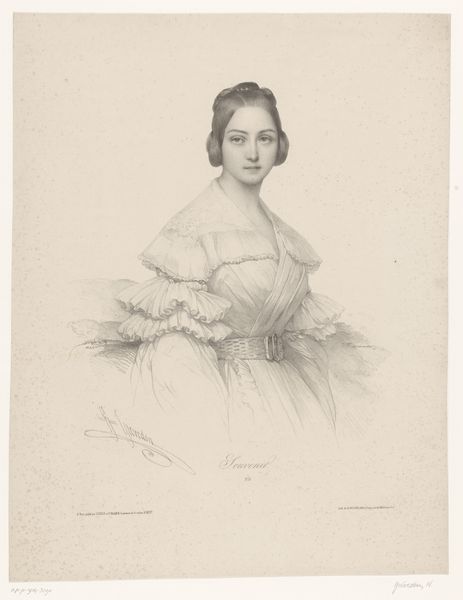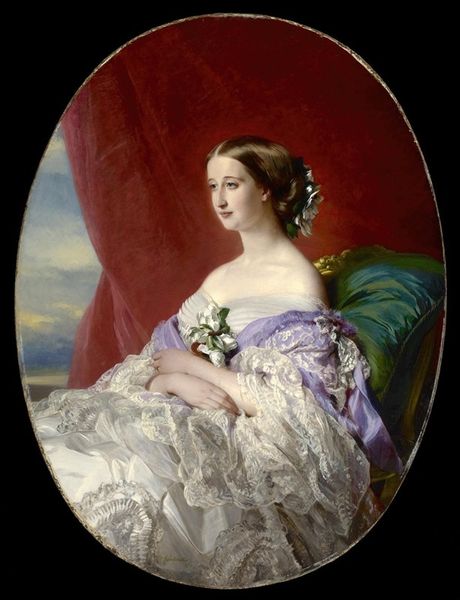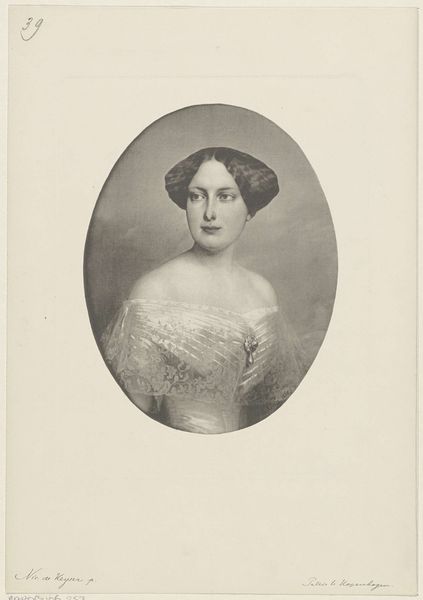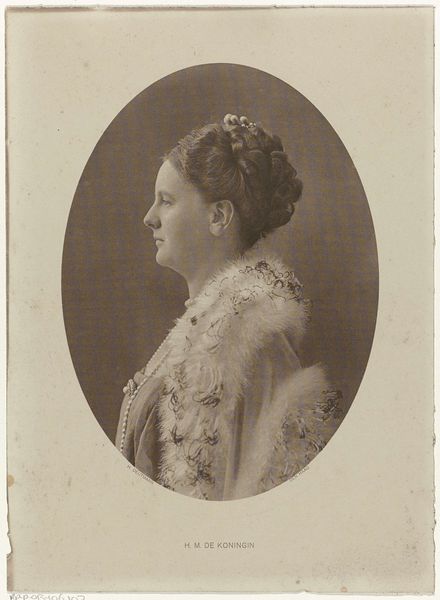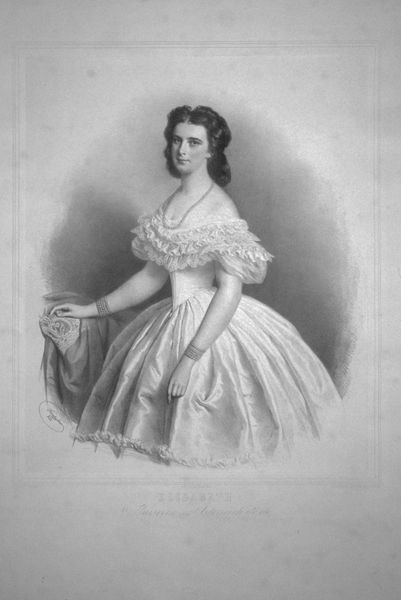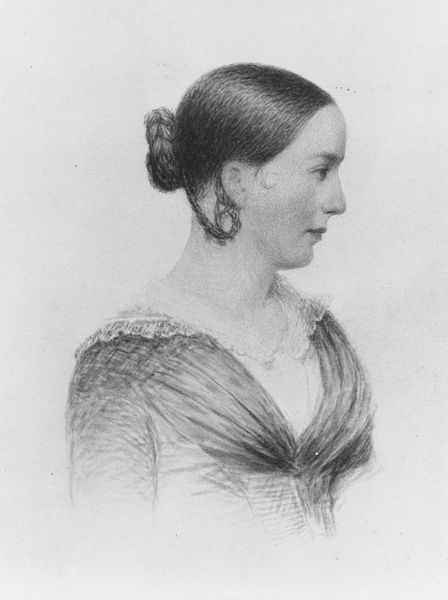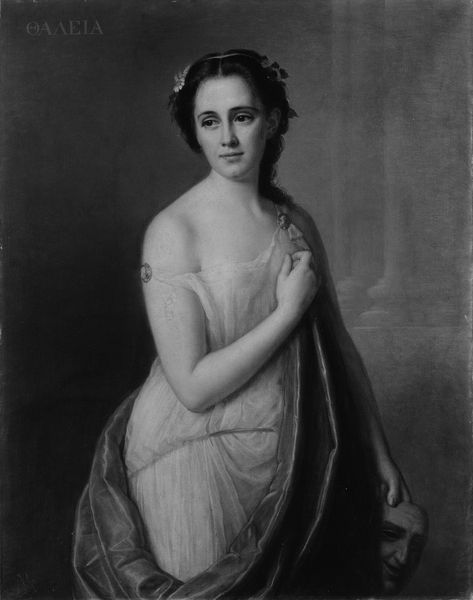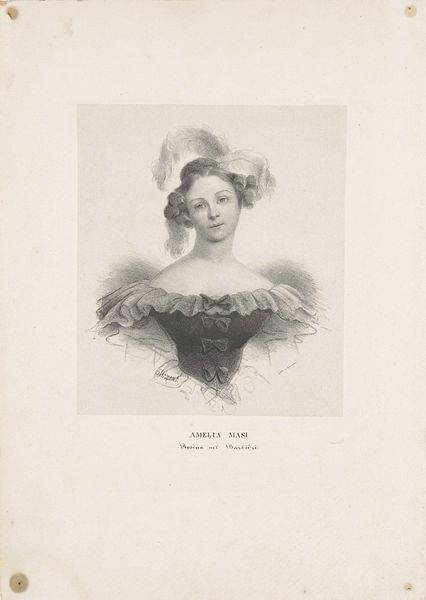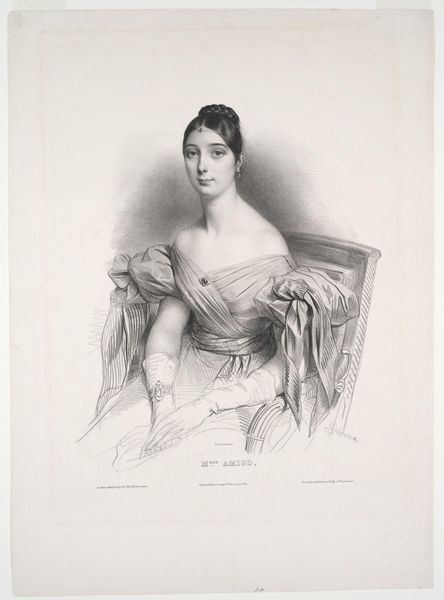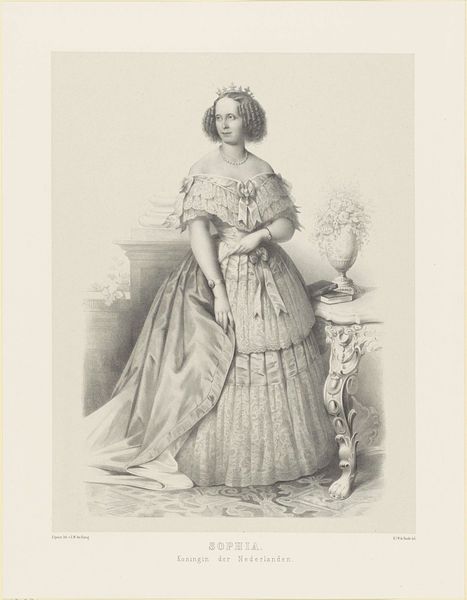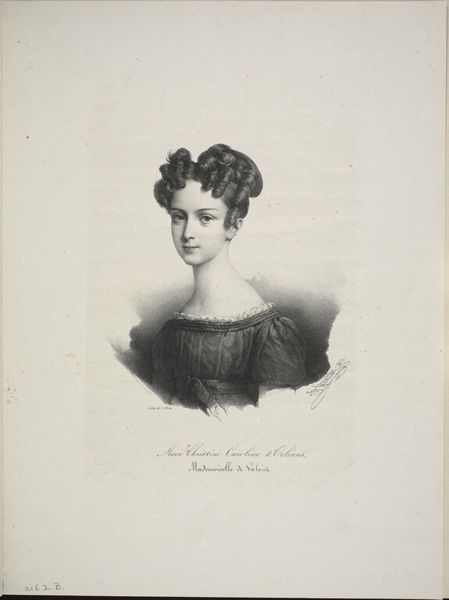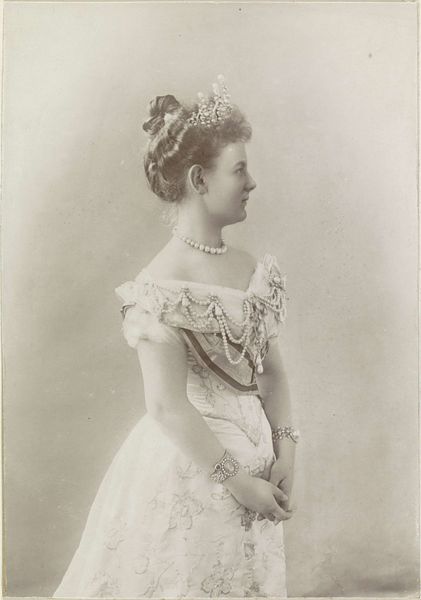
Portrait of the Empress Eugenie, after Winterhalter 1805 - 1879
0:00
0:00
drawing, print, paper
#
portrait
#
drawing
#
black and white photography
# print
#
paper
#
black and white
Dimensions: plate: 20 x 15 in. (50.8 x 38.1 cm) sheet: 26 5/8 x 19 7/8 in. (67.6 x 50.5 cm)
Copyright: Public Domain
Curator: This is a print titled "Portrait of the Empress Eugenie, after Winterhalter." It's attributed to Léon Alphonse Noël and dates roughly from 1805 to 1879. Editor: It evokes a real sense of melancholy, doesn't it? Even though it's black and white, the textures are so rich – the lace, the plush fabric she's nestled into. There's something almost dreamlike about the image. Curator: Absolutely. It speaks to the constructed image of royalty at the time. Winterhalter, and Noel after him, weren’t just creating a likeness; they were crafting a symbol of power and elegance, carefully managed for public consumption. Eugenie was well known as a great beauty and tastemaker, so the way her image was controlled and disseminated mattered. Editor: And the lace! It overflows, almost obscuring her. Lace often signifies femininity and wealth, of course. But here, it feels almost like a cage. The flower in her hair is beautiful, but it also adds to this feeling of curated beauty, every detail a carefully chosen emblem. Curator: It's interesting you say "cage," because the court of Napoleon III, while opulent, was also fraught with political tension. The constant pressure on Eugenie to produce an heir, her public role in an empire struggling to maintain legitimacy...these realities added layers to how she was perceived, even in flattering portraits like this one. The politics of imagery is not always clear cut, as the public tends to be contradictory with those in power. Editor: The oval format reinforces this sense of containment as well, almost like a cameo. What's striking is that despite the finery, there is a palpable sadness in her gaze. It's this contrast that gives the portrait such enduring emotional power. She holds her own hands—as though needing to provide her own comfort, protection even. Curator: Precisely. Consider the context: this portrait likely circulated widely as a form of propaganda. Even though the print may present an idealized image of the Empress, we, as viewers, can still interpret some psychological insights that subvert her carefully controlled persona. Editor: The symbols are potent, still speaking to us across the centuries. What remains with me is that this is not only an image of the Empress but a subtle reflection of a woman grappling with a constrained destiny.
Comments
No comments
Be the first to comment and join the conversation on the ultimate creative platform.
